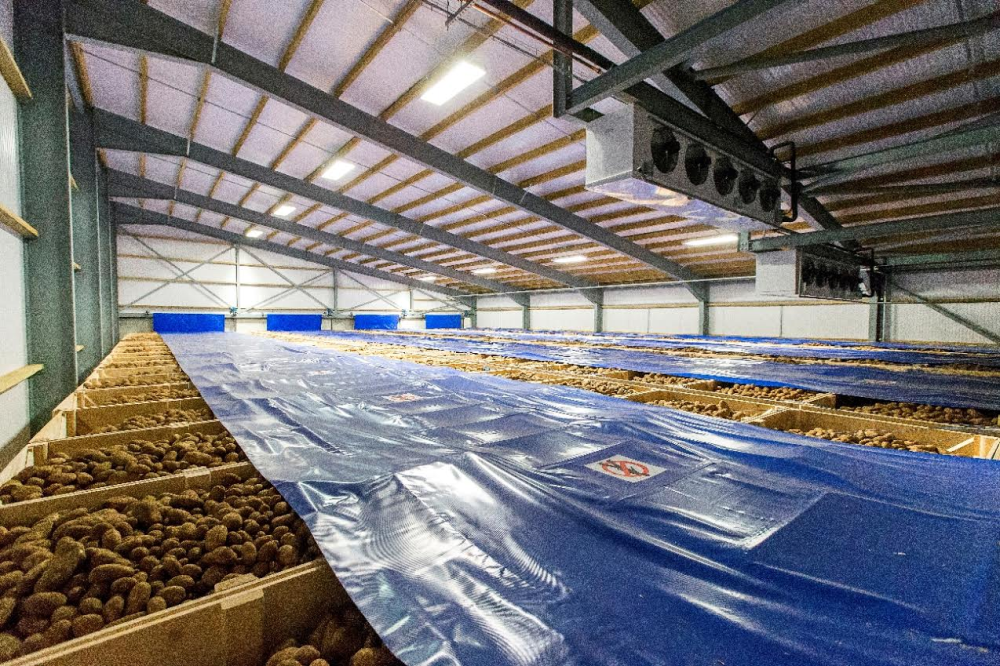
New statutory product label changes to Chlorpropham (CIPC) were announced in July. CIPC is an essential tool to control sprouting and is applied to around 3.5m tonnes of potatoes stored each year by around 1,000 growers.
New application rates for CIPC have been agreed for 2015-16. The gradual annual reduction in CIPC total dose was requested by the companies that hold the approvals for formulations as part of the CIPC stewardship process, and was agreed with the Expert Committee on Pesticides (previously Advisory Committee on Pesticides).
For the 2015-16 season, new statutory limits on total dose rates, approved by Chemicals Regulation Directorate (CRD) are 30g/tonne for the fresh market and 50g/tonne for processing (including fish & chip shops and peeling). The latest time of application is 14 days before removal from store for sale or processing is also a statutory requirement.
Best practice, in-line with Red Tractor Farm Assurance and the NAAC applicator group, permits just one application in cold stores (<5°C), early in storage, before temperature is decreased below 7°C.
“From 2017 it is expected that new product labels will permit a total dose of no more than 36 grams/tonne,” says Adrian Briddon, Group Secretary of the Stewardship Group. “More importantly, it is anticipated, the conditions under which this may be applied, will be more strictly controlled on product labels.”
It is recommended that applications at full label rates should not be carried out unless best practice methods are in place and stores are suitable for effective distribution of the chemical.
“BASIS advisors and users of CIPC should be aware that even modest doses (around 10-14 grams/tonne) applied under conditions where best practice modifications have not been adopted will increase the risk of a Maximum Residue Level exceedance,” added Mr Briddon.
“If you use CIPC, you must check and adhere to the statutory conditions of use and, now more than ever, it is critical that users adopt best practice. The easiest way of doing this is to use an NAAC applicator and ensure that a store checklist is completed before any application is made.” The ‘Be CIPC Compliant’ campaign (www.BeCIPCcompliant.co.uk) promotes best practice and raises awareness of the issues surrounding CIPC use. The aim is to reduce the levels of residue found on crops, to safeguard its availability for future use.
